|
Leo Haks and the NGA Collection
Indonesian photographs1860s–1940s
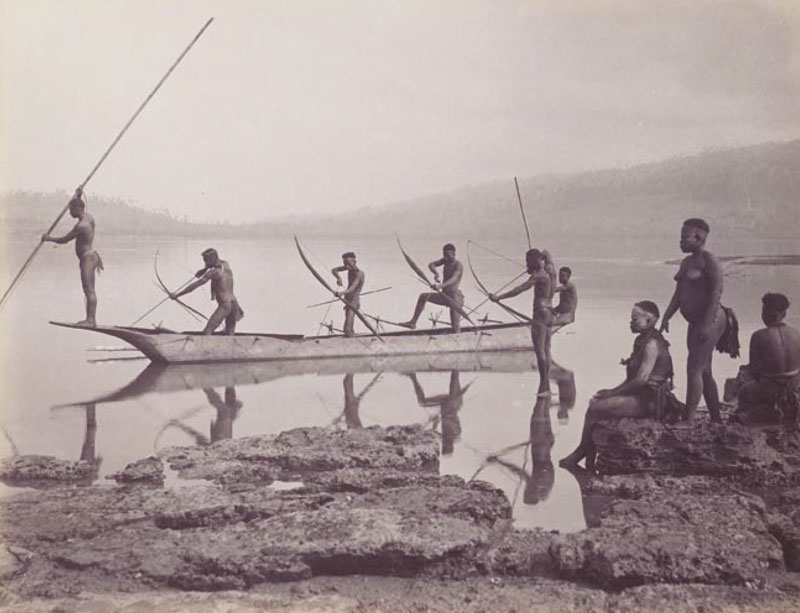 |
Philip Klier Andamanese fishing in Burma album c.1887
albumen silver photograph 21.1 x 27.0 cm National Gallery of Australia, Canberra Purchased 2007 |
Gael Newton AM, 2025
Revised text based on a 2007 essay
Museum and gallery curators collect for their institutions and apply scholarship to their cataloguing and in presenting works to the public. They are rarely out there in the junk shops or collectibles auctions or eBa. They most often buy through reputable dealers, major auctions and private collectors. Collectors, in turn, vary from the highly intuitive, who rarely write or talk about their collections, to people who are great experts involved in scholarly publications and exhibitions.
Curators end up with a trove of stories they can relate (and some they can’t) about their encounters and meetings with collectors. Meetings with dedicated, passionate and pioneering collectors usually leave curators with a greater respect for the originality and astuteness of the collector, who patiently builds and builds over a lifetime in areas overlooked or even dismissed by the current market and museum.
In August 2007, the National Gallery of Australia acquired a collection from such a collector, Leo Haks of Amsterdam, who started collecting from a chance purchase in Burma (now Myanmar) in 1977. Prior to leaving for Singapore, where his new job as manager of the Insight guides to Asia travel books awaited him, he bought an album of photographs of Burma in the 1870s–1890s. The album, by the Rangoon (now Yangon) studio of German-born photographer Philip Klier (1845–1911), was subsequently taken apart to provide illustrations for one of the Insight guides. Later, it was carefully rebound.
From that start in 1977, Haks became fascinated with early photography in Indonesia between the 1860s and 1940s. In the 1980s, he returned to Amsterdam and became a dealer in rare books and Balinese paintings.
He co-authored a number of books on Indonesian art and continued building what became the only museum standard holding of Indonesian photography in private hands. The Klier album remained special to Haks throughout the decades.
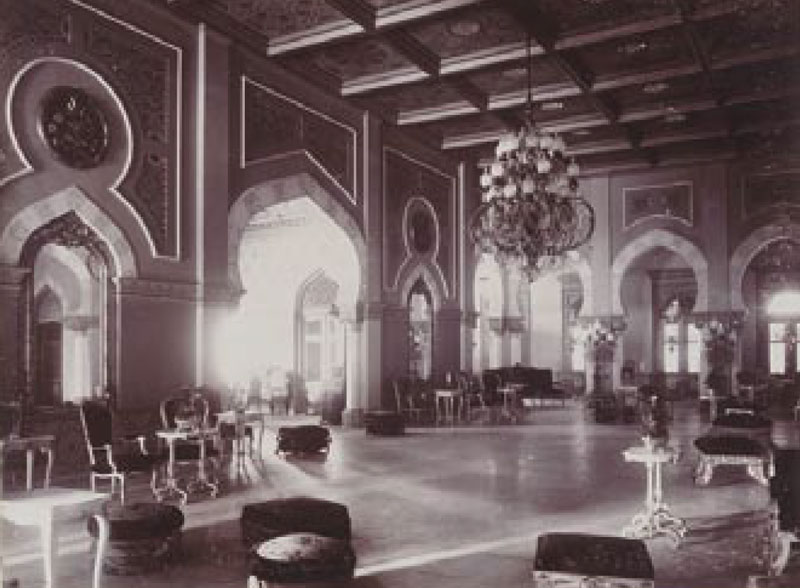 |
Charles J Kleingrothe, Interior of the Istana Maimun,Medan in Sumatra album c. 1900
27.8 x 36.2 cm National Gallery of Australia, Canberra Purchased 2007 |
Leo Haks built a collection of 5000 prints, as well as thousands more in albums both grand and humble. These albums, prints and his library of over 140 mostly rare books on the subject were lugged up the narrow staircases of his four storey Amsterdam home. There they were expertly catalogued and rehoused in archival sleeves, new bindings or specially made cases.
The collection came to the attention of the National Gallery of Australia while I was doing electronic research to develop the gallery’s new focus collection of Asian and Pacific photography initiated by Director Ron Radford in 2005 and in preparation for the 2008 exhibition, Picture Paradise Asia–Pacific photography 1840s–1940s.
In 2005, the only Indonesian photographs I knew were nearly a century apart: the rich tone prints of the studio of English-born photographers Walter Woodbury and James Page, who had previously worked in Australia in the 1850s; and the famed French photojournalist Henri Cartier- Bresson’s Bali pictures from the 1950s. However, what was also apparent was that the history of photography in the former Dutch East Indies was poorly known beyond the archives and museums in the Netherlands.
Indonesian photography became of great interest to the National Gallery as it was undervalued in the market and pertinent to the new collecting focus on the Asia and Pacific region. It also complemented the existing collection strengths in Southeast Asian textiles.
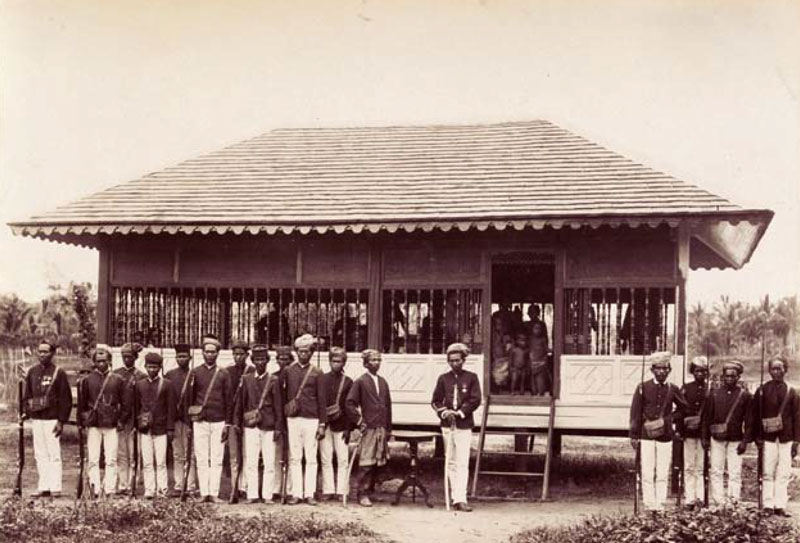 |
Woodbury and Page Eoli 1877 in Souvenir van Atjeh 1884–89 albumen silver photograph
31.0 x 36.6 cm National Gallery of Australia, Canberra |
Over the years Leo Haks lent works to many international exhibitions and provided illustrations to numerous publications on Indonesian culture and history. He had a small website on his various collections and inventory and with the wonder of the internet, we were soon in correspondence. On discovering Haks was due to be in Australia for a short trip in 2006, I organised a meeting in Sydney. There, an invitation to visit Canberra was extended and accepted. Several works were acquired that year from Haks.
Director Ron Radford saw the potential for a major acquisition and encouraged further negotiations, including my visit to Amsterdam in November 2006, and a follow up visit by Haks to Canberra in June 2007. Going through the collection was an intense experience sitting side-by-side through long days of opening boxes. Visits to museum collections in the Netherlands and to other collectors also took up much of my time; so much so that I still have little idea of what the Netherlands even looks like!
The collection was comprehensive and all works were of exceptional quality, which indicated a ruthless patience and constant culling and trading-up. Although originally catalogued with a social perspective by subject, the collection was reorganised for my visit; Haks had recognised the art museum perspective and grouped the photographs by photographer. As Haks is also a photographer we found we shared a fairly convergent idea of which were the finest prints and photographers.
The Haks collection shows life and landscape in Indonesia from the 1860s to 1950s, the last century of Dutch colonial rule. The period covers the development of the modern photographic system of multiple prints – from glass negatives in the 1860s to the versatile roll film cameras of the 1920s to 1950s.
Some 2000 prints are nineteenth to early twentieth-century albumen prints and early gelatin silver photographs, many of which are in studio albums. In addition, there are 87 family albums, 146 collotypes, 556 gravures and photogravures, and 22 offset plate rare books. Haks chose not to acquire daguerreotypes of the 1840s to 1850s or salt prints on paper due to their scarcity and lack of a broad range of subject matter.
In the collection, formats vary from tiny cartes-de-visite to large plate landscapes, several mammoth plate portraits and panoramas. the content ranges from vernacular and family portraits to grandiose presentation albums – forerunners of present day glossy annual reports.
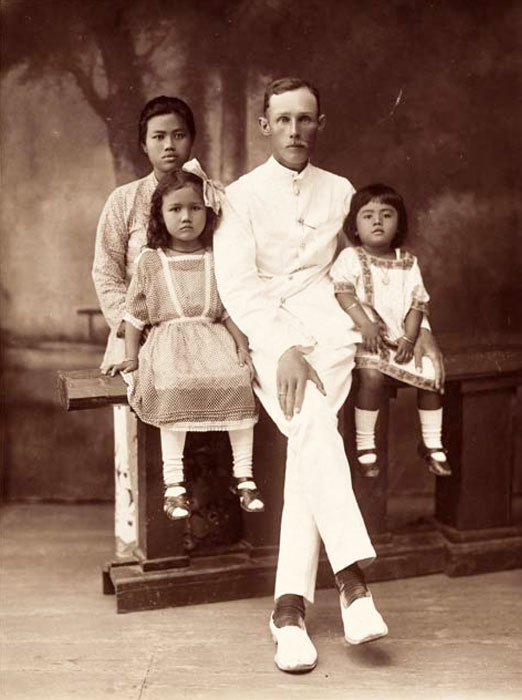 |
Unknown photographer Family portrait c.1900 gelatin silver photograph
19.3 x 14.2 cm National Gallery of Australia, Canberra |
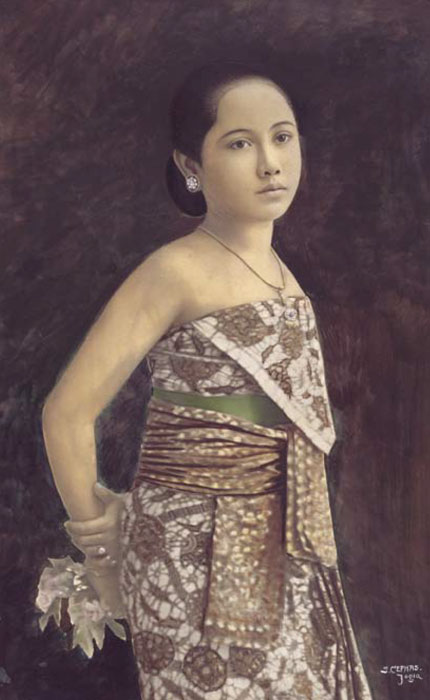 |
Sem Cephas Portrait of a Javanese woman c.1890
gelatin silver photograph, colour pigment 28.5 x 24.0 cm
National Gallery of Australia Canberra |
The Klier album is of Burma, and some material is from Singapore, Hong Kong and Shanghai – many photographers in the region worked in various countries or sold prints from several in their shops. The Haks collection of Indonesian material includes all major and minor professional names including Woodbury and Page, Tassilo Adam, HM Neeb, CJ Kleingrothe, Kassian Cephas, Isidore Van Kinsbergen, Onnes Kurkdjian and Thilly Weissenborn.
The majority are foreign born but Kassian Cephas was the first Indonesian photographer of note and Thilly Weissenborn, the first significant woman photographer, was born in Indonesia. Most were residents and Indonesia was their adopted country where they spent the remainder of their lives – as opposed to short term visiting foreign photographers.
A number of Chinese and Japanese photographers were among the earliest non-European photographers at work in Indonesia – a pattern repeated across Asia and the Pacific. The island of Bali features prominently and there are fine studies of batik costume and Indonesian dancers. There are gorgeous sharply detailed albumen prints in which a host of long dead members of the royal courts seem to be alive and present.
The acquisition of the Leo Haks collection remains one of the most significant ever undertaken by the Gallery. It will sustain many years of investigation by scholars and curators across various disciplines both within Australia and, it is hoped, from Indonesia.
Haks, moved to New Zealand from 2008. We kept in contact. His collection of postcards continued to grow. His collecting days continued up until his death in 2021.
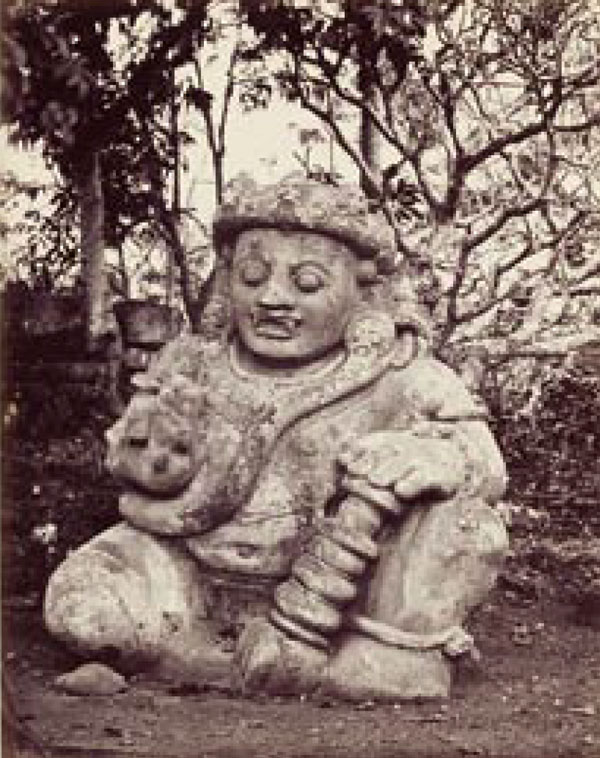 |
|
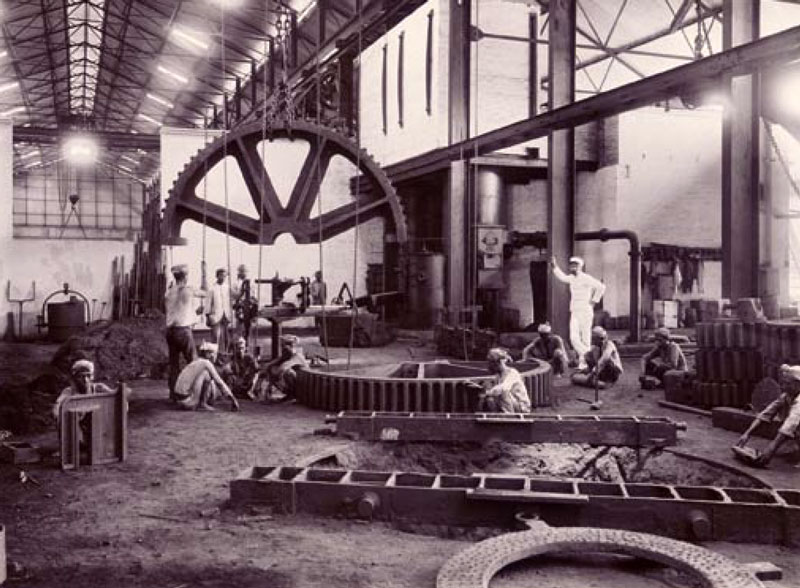 |
Woodbury and Page Statue of a raksasa or giant at Singasari in Vues de Java 1860
albumen silver photograph 24.3 x 19.2 cm
National Gallery of Australia, Canberra |
|
George Lewis Gieterij met smeltovens, richting lost west 1902
in De Nederlandsch-Indische Industrie te Soerabaya
gelatin silver photograph 16.8 x 22.8 cm
National Gallery of Australia, |
Gael Newton AM was the Senior Curator, Photography at the National Gallery of Australia
More on Leo Haks: click here
|






